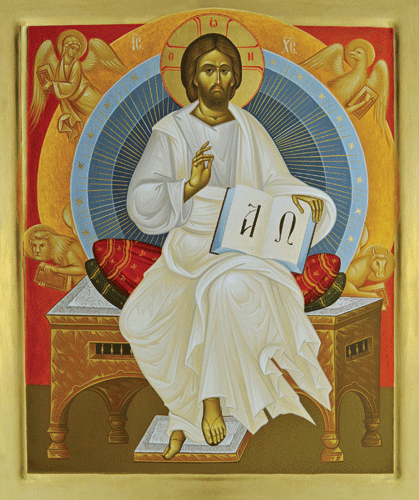Jesus the Church

As he journeyed he came near Damascus, and suddenly a light shone around him from heaven. Then he fell to the ground, and heard a voice saying to him, “Saul, Saul, why are you persecuting Me?” And he said, “Who are You, Lord?” Then the Lord said, “I am Jesus, whom you are persecuting….” (Acts 9:3-5)
The conversion of Saul the persecutor into Paul the Apostle is one of the more dramatic and remarkable events in the book of Acts and in the early years of the Church. Certainly it is dramatic in the long-term significance for the Church of his conversion, his apostleship, his epistles, etc. But just in terms of the scene itself in Acts 9 - the journey to Damascus, the divine ambush along the road, the light from heaven, the voice of the Lord, the interrogation - it is very dramatic!
In the midst of all the drama, however, we must not miss something very important in this encounter, something so important that the Lord says it twice in short order: “Why are you persecuting me?…. I am Jesus, whom you are persecuting.”
Prior to his being waylaid on the road to Damascus Acts describes Saul as the main agent in the great persecution of the Church that began at Jerusalem but quickly spread. He was present at the martyrdom of Stephen and afterwards went around making havoc for the Church and arresting and imprisoning the disciples of the Lord. The point, as Acts makes perfectly clear, is that Saul is vigorously and aggressively persecuting the Church. But on the road to Damascus, when Jesus identifies himself to Saul, he doesn’t mention the Church, but rather states twice that Saul is persecuting him: “Why are you persecuting me?…. I am Jesus, whom you are persecuting.”
Now, the light, we should note, shone around Saul “from heaven” and he heard the voice of the Lord, presumably also from heaven. And prior to this in the book of Acts it has been emphasized repeatedly that Jesus has ascended and is now in heaven at the right hand of the Father (2:33; 3:21; 5:31). If we were, in other words, to try and locate Jesus according to the preaching of the apostles in the book of Acts we would not be mistaken to say that he is in heaven, the ascended and reigning Lord who is at the right hand of the Father.
But here, in the encounter with Saul, Jesus, speaking from heaven, identifies himself twice with the Church which Saul has been persecuting. He tells Saul, in effect, “In persecuting the Church you are, in fact, persecuting me.” In other words, Jesus, who is at the right hand of the Father in heaven, is also in the world as the Church, the persecuted body of disciples and apostles with whom he identifies himself.
That this identification of Christ with the Church was not lost on Saul turned Paul is clear from the epistles he wrote later as an apostle. To the Corinthians he said plainly, “Now you are the body of Christ….” (1 Cor 12:27). To the Ephesians he said that Church “is [Christ’s] body, the fullness of Him who fills all in all.” (1:23) And to the Colossians he writes, “[Christ] is the head of the body, the church….” (1:18) Finally, drawing out the identification of Christ with the Church even more pointedly, he writes that Christ is “the Head, from whom all the body, nourished and knit together by joints and ligaments, grows with the increase that is from God.” (Col 2:19)
It should be clear from this that it is woefully inadequate to think of the Church as merely a human society or institution, even one dedicated to Christ. For Christ has identified himself with the Church. It is his body, of whom he is the head. To quote Fr Dumitru Staniloae:
The Church is Christ extended with His deified body in humanity, or, in other words, she is this humanity united with Christ and having Christ imprinted on her with His deified body….. The Church, therefore, has a theandric [i.e. Divine-Human] constitution. Her content consists of Christ united with the Father and the Spirit according to His divine nature, and united with us according to His human nature. Being included in the incarnate hypostasis of Christ, the Church could be called Christ, if we understand Christ as extended into humanity. (Orthodox Dogmatic Theology vol IV, p14)
The work of salvation that the Son of God began in the womb of his Mother by taking a body continues even now in the world through this same body, the Church. It is not enough for us, then, to affirm with the Creed that Christ is seated at the right hand of the Father and stop there. We must also, with the Creed, go on to confess “one, holy, catholic, and apostolic Church” because this, too, is Christ, His body, his human nature and the first-fruits of the created world raised up into the divine life. With the Apostle Paul, then, we believe that Christ’s work in the world will continue —
till we all come to the unity of the faith and of the knowledge of the Son of God, to a perfect man, to the measure of the stature of the fullness of Christ; that we…may grow up in all things into Him who is the head—Christ…. (Eph 4:13, 15)
Christ is risen! Indeed, He is risen!
With Love In Christ, Fr John














